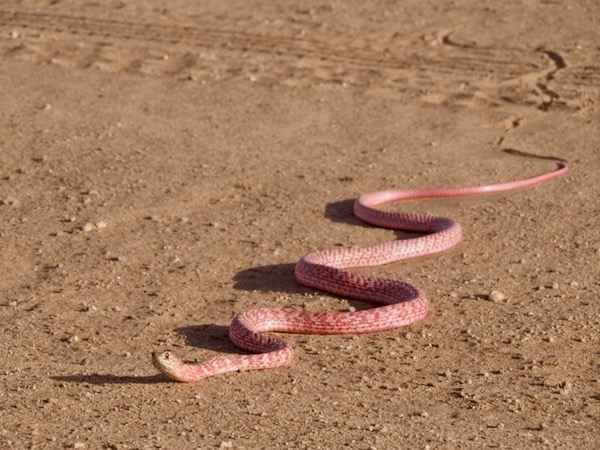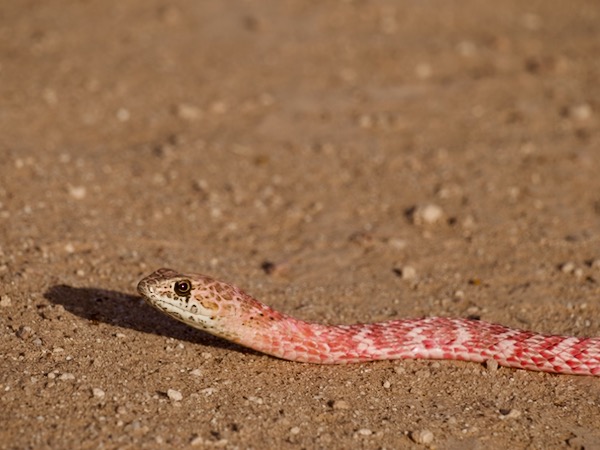Masticophis flagellum
—
Coachwhip
Subspecies I've seen:
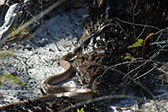
M. f. flagellum
Eastern Coachwhip
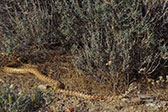
M. f. piceus
Red Racer
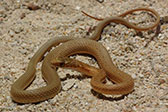
M. f. ruddocki
San Joaquin Coachwhip
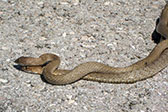
M. f. testaceus
Western Coachwhip
Masticophis flagellum flagellum
—
Eastern Coachwhip

I spotted this large snake in the late afternoon while bicycling on one of the many beautiful bike trails in this very large state park. It had no interest in posing for me, but after following it around for ten minutes or so it finally stopped still long enough to get a few mediocre shots. The next afternoon I saw another one, but that one vanished almost instantly into the bushes.
Masticophis flagellum piceus
—
Red Racer

Coachwhips are named for their whip-like appearance: they're very long and thin with a scale pattern on their tails that looks braided. They're purportedly the fastest snakes in America, but this one didn't feel the need to show its speed. After posing alertly for a few minutes, it wandered to a nearby creosote bush and slowly slithered down a rodent burrow.
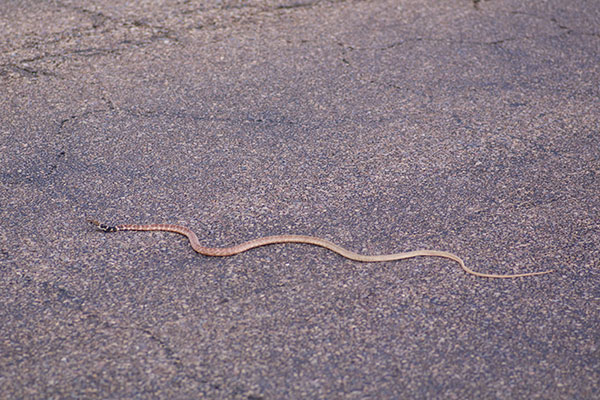
I left Borrego Springs early in the morning to head towards Organ Pipe National Monument in south-central Arizona. I was trying to time it so that I'd be driving past Algodones Dunes at a good hour for basking lizards, but for some reason no lizards basked in my view. My consolation prize was this mid-sized coachwhip hanging out on the warm pavement early in the morning. I noticed it when passing in the opposite lane, so I stopped the car, grabbed my camera, and approached slowly. It held its position for this photo, but then another car approached in the snake's lane, and I had to wave down the car long enough to shoo the snake back into the desert.
Randall Henderson Loop Trail, Santa Rosa and San Jacinto Mountains National Monument, Riverside County, California—April 30, 2019
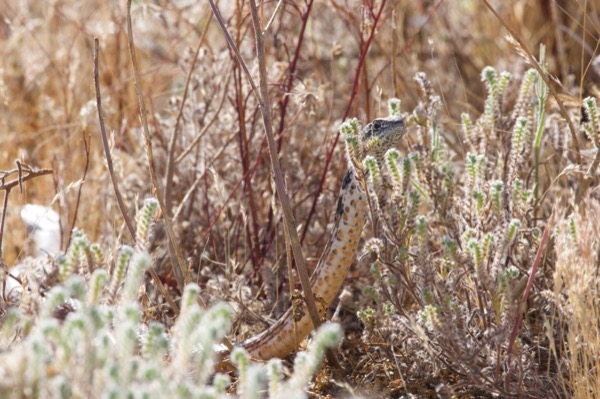
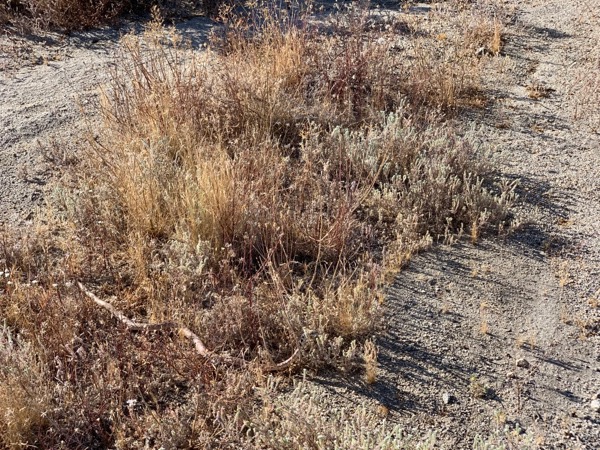
This large coachwhip probably saw me before I saw it, as it had raised its head into the "periscope" position and was looking straight at me. And they have excellent vision. It was kind enough to remain immobile while I not only took a few close-ups with a 300mm lens, but also loomed nearby with my iPhone.
Masticophis flagellum ruddocki
—
San Joaquin Coachwhip
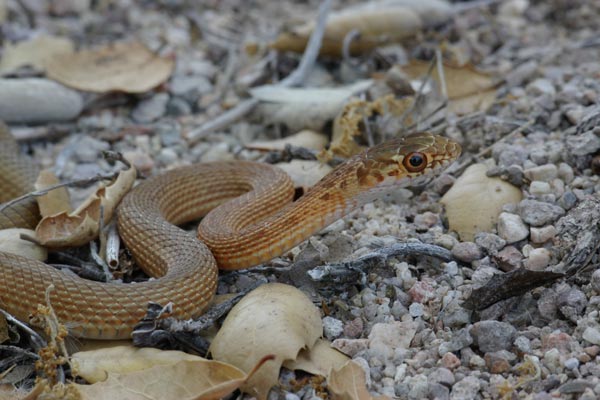
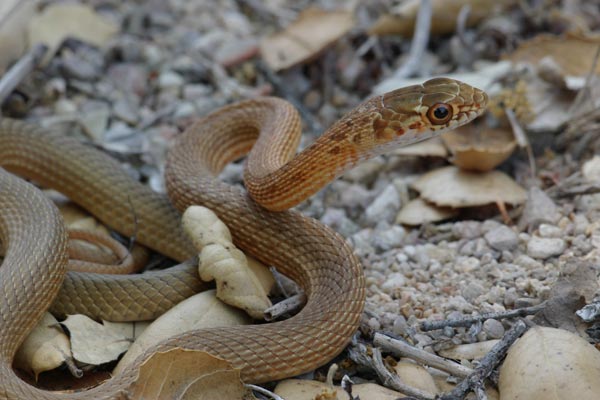

I uncovered this young coachwhip from under a small piece of loose bark in the rocky riverbed where we had previously seen several Blainville's Horned Lizards. I didn't recognize it at first, and thought it was an oddly-colored California Striped Racer, but it only took my friend Jackson Shedd about 7 seconds to realize that it was the relatively rarely-seen C. f. ruddocki.
Masticophis flagellum testaceus
—
Western Coachwhip
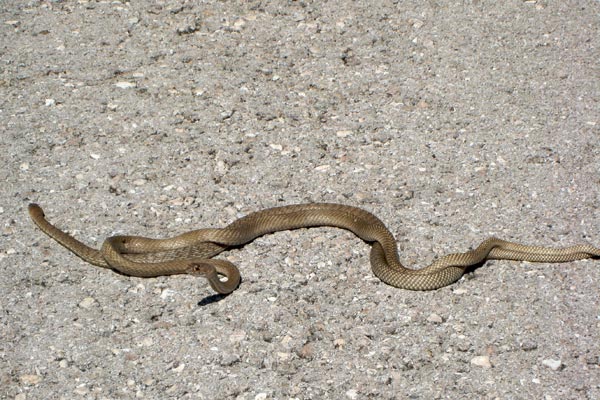

After a morning of unsuccessful Sand-Dune-Lizard-hunting, but massively successful dog play, we're heading back in the direction of Roswell (land of space alien crashes, you know) when I catch a glimpse of large snakitude at the side of the fairly busy road. It looks big, but that's all I can tell at first. We wait for the oncoming traffic to ease, pull a U-turn, drive back past it the other way, and pull over on the side of the road. I jump out with my wife's camera, look both ways before crossing the street (of course!), and hurry over to see what it is. Two snakes! Coachwhips! Romantically involved? But wait, the one on the bottom isn't moving ... it looks kinda ... dead, actually.
Sure enough, the top snake was alive, but the bottom one, not so much. The live one really wanted to be covering the dead one's body. I took a few photos but soon spooked the live one, which slithered off into the desert. Not wanting to leave my wife and sister pulled over on the side of the fairly busy road for too long, I headed back. We drove a little ways until the traffic eased so we could U-turn again, which meant we passed the site of apparent serpentine necrophilia one more time. When we did so, I saw that the live snake had come back and was once again back on top of the dead one. Creepy or sad? You be the judge.
Printed references:
- Bartlett, R. D., Tennant, A. 2000. Snakes of North America, Western Region
- Behler, J. L., King, F. W. 1979. The Audubon Society Field Guide to North American Reptiles & Amphibians
- Brown, P. R. 1997. A Field Guide to Snakes of California
- Conant, R., Collins, J. T. 1998. Peterson Field Guide to Reptiles and Amphibians of Eastern and Central North America, Third Edition, expanded
- Crother, B. I. (ed.) 2017. Scientific and Standard English Names of Amphibians and Reptiles of North America North of Mexico, with Comments Regarding Confidence in Our Understanding, Eighth Edition
- Degenhardt, W. G., Painter, C. W., Price, A. H. 1996. Amphibians & Reptiles of New Mexico
- Dixon, J. R., Werler, J. E. 2000. Texas Snakes: A Field Guide
- Hanson, J., Hanson, R. B. 1997. 50 Common Reptiles & Amphibians of the Southwest
- Miller, A. H., Stebbins, R. C. 1973. The Lives of Desert Animals in Joshua Tree National Monument
- Schoenherr, A. A. 1992. A Natural History of California
- Smith, H. M., Brodie, E. D. Jr. 1982. Reptiles of North America: A Guide to Field Identification
- Stebbins, R. C. 2003. Peterson Field Guide to Western Reptiles and Amphibians, Third Edition
- Stoops, E. D., Wright, A. 1997. Snakes and other Reptiles of the Southwest, 4th Edition
- Tennant, A. 1997. A Field Guide to Snakes of Florida
- Wauer, R. H. 1964. Reptiles and Amphibians of Zion National Park
